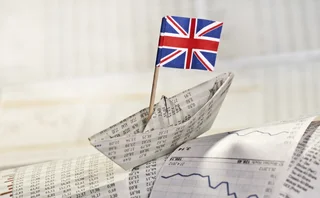
Inflation outlook volatile, BoE warns
UK inflation will be “unusually volatile” in the coming months and could fall below 1% in the autumn, the Bank of England said in its quarterly inflation report today.
In the short term, the bank anticipated that inflation will drop well below its 2% target, reaching as low as 1% later in the year, but added that it was uncertain how slack in the economy, the strength of sterling and commodity prices would affect it.
The margin of spare capacity (the difference between potential output and actual output) in the economy is likely to continue to grow for some while yet, bearing down on inflation in the medium term, the bank warned. However, this could be offset by the impact of sterling’s depreciation on consumer prices in the near term. Rising global energy prices may also exert upwards pressure on inflation.
Among the bank’s Monetary Policy Committee there are a range of views on the relative strengths of these factors, the bank said. In addition, having committed an extra £50 billion to its asset purchase facility, or ‘quantitative easing’, on August 6, the bank said it was “difficult to predict with precision the impact of the asset purchase programme on nominal spending and inflation”.
The bank’s governor, Mervyn King, warned that while asset purchases may boost the supply of money to the economy, increased bank lending is not an inevitable result of quantitative easing. “It will take time for banks to repair their balance sheets, and they face considerable challenges in replacing those sources of funding that dried up in the financial crisis and the temporary support provided by the public sector.”
Overall, the report maintained that banks’ funding conditions have improved in recent months, and that there has been some stabilisation in their finances. But they will need to replace a significant amount of funding that is due to mature in the coming years, including government aid. In addition, the increased regulatory emphasis on capital adequacy may be pushing up funding costs, the bank said.
However, even if credit availability does improve, spending could be curtailed by households choosing to save more, the bank warned.
In a scenario where the bank rate is held at 0.5% and the stock of purchased assets under the government’s quantitative easing programme reaches £175 billion, the chances of inflation being above or below the 2% target by 2011 are “broadly balanced”. However, the bank asserted that its drive to maintain inflation close to target could see inflation rise.
See also: BoE allocates extra £50 billion for asset purchases
UK inflation will stay low for some time, BoE says
Only users who have a paid subscription or are part of a corporate subscription are able to print or copy content.
To access these options, along with all other subscription benefits, please contact info@risk.net or view our subscription options here: http://subscriptions.risk.net/subscribe
You are currently unable to print this content. Please contact info@risk.net to find out more.
You are currently unable to copy this content. Please contact info@risk.net to find out more.
Copyright Infopro Digital Limited. All rights reserved.
As outlined in our terms and conditions, https://www.infopro-digital.com/terms-and-conditions/subscriptions/ (point 2.4), printing is limited to a single copy.
If you would like to purchase additional rights please email info@risk.net
Copyright Infopro Digital Limited. All rights reserved.
You may share this content using our article tools. As outlined in our terms and conditions, https://www.infopro-digital.com/terms-and-conditions/subscriptions/ (clause 2.4), an Authorised User may only make one copy of the materials for their own personal use. You must also comply with the restrictions in clause 2.5.
If you would like to purchase additional rights please email info@risk.net
More on Inflation markets
New investor solutions for inflationary markets
Geopolitical risks, price volatility, clashing cycles, higher interest rates – these are tough times for economies and investors. Ahead of the 2022 Societe Generale/Risk.net Derivatives and Quant Conference, Risk.net spoke to the bank’s team about some…
Brexit and the UK inflation market: delivery and response amid challenges
As inflation continues to rise amid uncertainty following the Brexit vote, banks are being called upon to think outside the box in response. At a forum convened by Risk and sponsored by BGC Partners, our panel discusses the direction of the UK inflation…
US inflation traders consider swap methodology change
Banks weighing up move to non-interpolated standard to cut capital costs
Margin rules push interdealer inflation swaps to clearing
Traders say 95% of the market now cleared, compared with 10% a month ago
Totem poll: users of Markit service call for change
Libor-like consensus methodology creates bad incentives, clients fear
Inflation derivatives house of the year: HSBC
Risk Awards 2015: UK bank married giant linker role with pension fund re-hedge
Corporate risk manager of the year: Electricity Supply Board of Ireland
Risk Awards 2015: Utility found a new way to tackle bank break clauses
Euro inflation floors hit three-year low
Traders point to lower volatility, but one big short is also blamed







